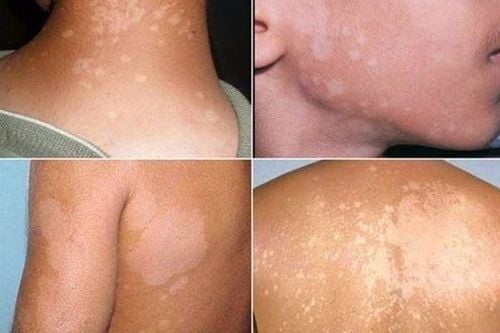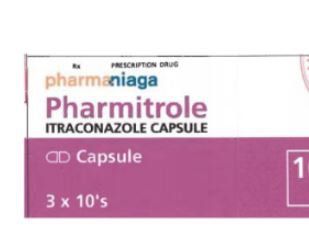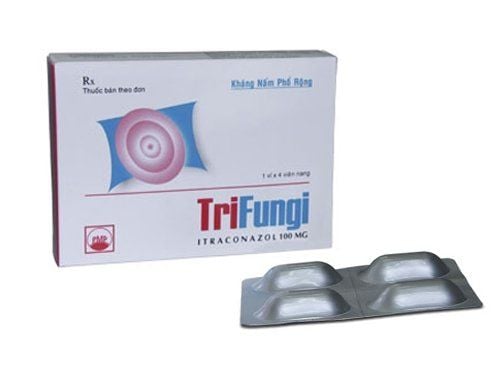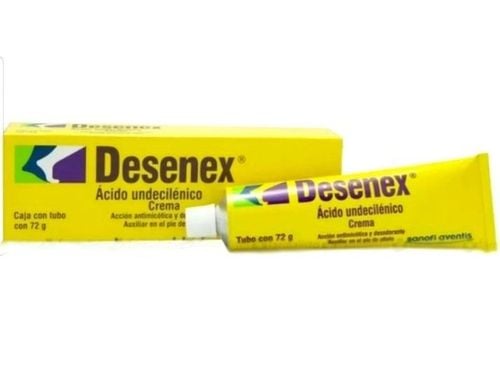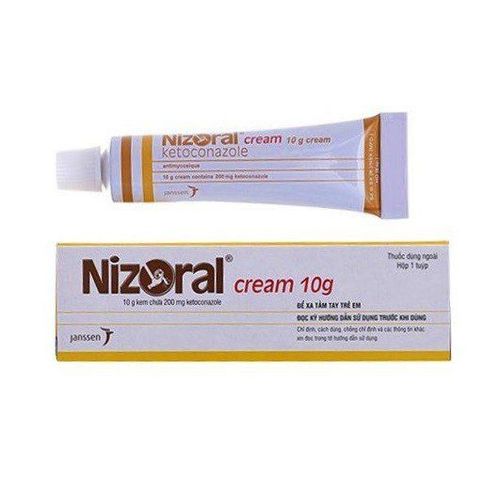This is an automatically translated article.
Kentax topical skin cream has the main ingredient Ketoconazole. The drug has effects on many different types of fungi and is often indicated in cases of skin, mucous membrane, hair fungus...
1. What is Kentax?
Kentax antifungal medicine is manufactured and registered by Detapham Pharmaceutical Co., Ltd. Kentax is a topical medication that kills fungi and parasites, with the active ingredient being Ketoconazole.
Dosage form: Topical cream
Packing: 5g tube, each tube contains 0.1g Ketoconazole and excipients just enough.
2. Mechanism of action of the drug Kentax
Pharmacodynamics: Ketoconazole is an azole derivative with fungicidal activity or inhibition of fungal growth against dermatophytes such as Candida, Cryptococcus, Pityrosporum, Torulopsis (which are yeasts), eumycetes, and staphylococcus. degree,... For strains of the fungus Aspergillus Sporothrix schenckii,... Ketoconazole is less sensitive.Ketoconazole inhibits cytochrome P450 enzyme activity, which is an important enzyme in demethylation to ergosterol. Ergosterol is the main sterol of fungal cell membranes. Altered ergosterol levels affect cell membrane permeability and function. To date, no resistance has been detected during the use of Ketoconazole.
At high concentrations, Ketoconazole has direct physico-chemical effects on fungal cell membranes, thus having fungicidal ability. With candida fungi, Ketoconazole inhibits the conversion from bud spores to filaments that are capable of entering the body and causing disease.
Pharmacokinetics:
Absorption: When applied, Ketoconazole has only local effects, almost not absorbed into the blood. Distribution: When absorbed into the bloodstream, Ketoconazole concentrates on inflamed joint fluid, saliva, bile, urine,... Ketoconazole crosses the placenta but does not cross the blood-brain barrier. very small amounts in the cerebrospinal fluid. The drug is bound to plasma proteins (84-89%), mainly albumin. Metabolism: Ketoconazole is partially metabolised in the liver and produces inactive substances. Ketoconazole penetrates the cell membrane and inhibits fungal growth. When applied topically, Ketoconazole does not produce detectable concentrations in the blood. Elimination: Ketoconazole is eliminated in the feces.
3. Indications for topical Kentax
Kentax topical is often used in the following cases:
Fungal diseases of the skin and mucous membranes caused by agents such as Candida, Trichophyton, T. Mentagrophytes,...); Black tubercle , lang ben , lazy ; Interstitial fungus, nail fungus, hair fungus. Contraindications: absolutely do not use Kentax topical in cases of allergy to any of its ingredients and do not apply to the eyes.
4. Dosage and how to use Kentax skin cream
Always read the leaflet carefully before using the medicine and strictly follow the instructions of your doctor or pharmacist. To avoid harmful effects to your health, you must not arbitrarily change the number of times of application, route of administration or give Kentax medicine to other people when they have the same symptoms as you.
Dosage:
Skin candidiasis, tinea pedis, tinea versicolor or tinea versicolor: 1 time/day, applied for 2 weeks; Seborrheic dermatitis : 2 times / day, applied for 4 weeks or until cured; Tinea capitis: 1 time/day, applied for 2 weeks; Ringworm, wandering, lazy, interstitial fungus, nail: 1-2 times/day; For strabismus, ringworm, tinea versicolor, interstitial nail fungus, human body fungus in general: 1-2 times/day. Apply all over the affected skin area for maximum effect. Kentax topical is effective in reducing symptoms significantly in the first 2-3 days. Most cases show signs of reduction after 1 application. However, to avoid recurrence, you should apply continuously for at least 2 weeks and when necessary, can last up to 4 weeks.
If after 2 weeks of continuous use there is no improvement in symptoms, the diagnosis should be reviewed.
When you miss a dose, apply another dose as soon as you remember. However, if that time is close to the time of the next application, skip it and apply the next time as directed.
In case of overdose: Overdosing on Kentax may increase the risk of side effects. When Kentax is applied to large areas of the skin, absorption into the blood is not detectable at a concentration of 5 ng/ml for about 72 hours. At this concentration, the drug does not cause topical toxicity problems.
5. Side effects of skin fungus Kentax
Kentax topical medication rarely causes side effects for users (only about 2%). Symptoms may include skin irritation, itching, stinging sensation, crawling, ...
Tell your doctor or pharmacist if you experience any of these symptoms while using Kentax .
If you have to take the drug for a long time, you need to do liver function tests before and during treatment, do it again every 1-2 months. When there is an abnormal change in liver function, the drug should be discontinued.
6. Some notes when using Kentax skin cream
Pregnant and breastfeeding women : Should not be used, only when absolutely necessary and weigh the benefits and risks that the drug brings. The drug Kentax can be used by drivers and machine operators. In summary, the drug Kentax has effects on many different types of fungi and is usually indicated in cases of fungal skin, mucous membranes, hair fungus,... Patients should consult a doctor, not arbitrarily. buy home remedies.
Please dial HOTLINE for more information or register for an appointment HERE. Download MyVinmec app to make appointments faster and to manage your bookings easily.




